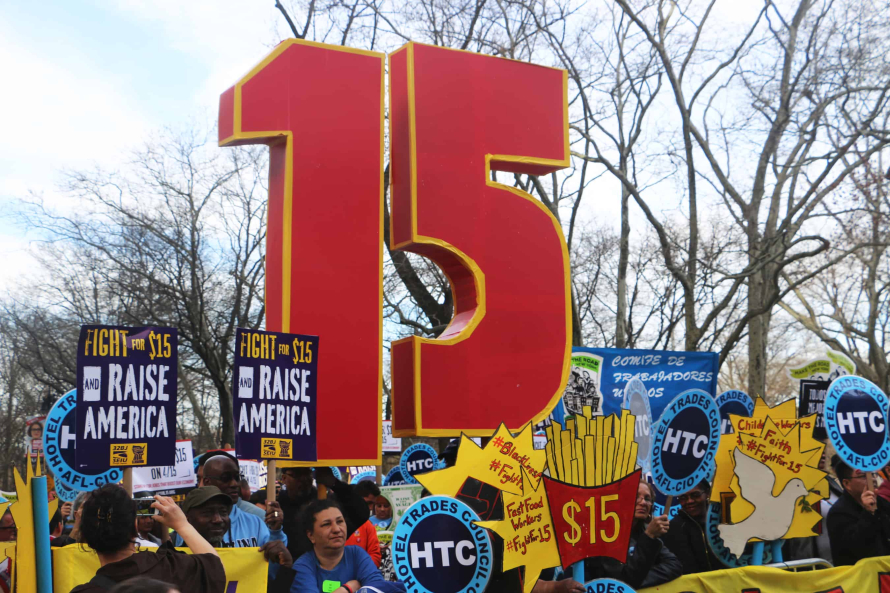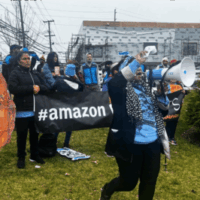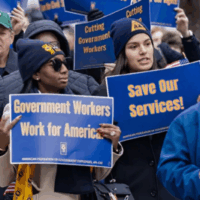From the Midwest plains and the Great Lakes, from the Deep South to the great Northwest, from the big cities on the East Coast to the port cities of California – in 230 cities and towns across the country April 15, 2015 marked the largest protests by low-wage workers in the nation’s history.
The Fight for $15 campaign, which began in November 2012 when 200 courageous fast food workers in New York City walked off the job in a one-day protest strike for higher wages and a union, has grown into a nationwide movement, pulling in many more low-wage workers from diverse occupations beyond fast food.
There were homecare workers, retail workers, child care workers, airport workers and part-time adjunct college professors, and for the first time large numbers of students. Construction workers left work sites to join the protests. Some Brink’s security workers seemed to spontaneously join some of the protests.
Protest marchers in New York City in the late afternoon converged on Manhattan’s West Side in a crowd estimated at 30,000 workers and supporters.

The movement to raise pay for low-wage workers has broad and growing public support. A poll released in January showed 63 percent of Americans support raising the federal minimum wage to $15 per hour by 2020, with 75 percent supporting an increase in the federal minimum wage to $12.50 by 2020.
Tens of millions of Americans are working in jobs that don’t pay enough to make ends meet. Forty-two percent of the nation’s workers are paid less than $15 per hour, according to a new research report this week from the National Employment Law Project (NELP). And, as Claire McKenna noted here two weeks ago, five of the ten highest-growth occupations pay median hourly wages of less than $12 per hour, with a sixth – nursing assistants – at a $12.07 median wage.
With so many Americans struggling at low-pay and stagnant wages, and with Congressional inaction keeping the federal minimum wage stuck at a paltry $7.25 per hour, it’s no wonder that the Fight for $15 movement — calling for a livable wage floor of $15 per hour and workers’ union rights to collectively bargain with employers – is rapidly gaining support.
That support is also what’s fueling more and more local efforts to boost minimum wages in the nation’s largest cities. Los Angeles is currently considering minimum wage increases to either $13.25 or $15.25. Activists in Washington, D.C. this week announced plans to put a $15 minimum wage on the ballot in 2016, and similar campaigns are moving in other cities. New York City’s mayor is pressing for the right to have a citywide minimum wage in the $15 range, something that Seattle and San Francisco have already enacted. Chicago’s minimum wage will hit $13 per hour in 2019.
While some companies, including Walmart and McDonald’s, have announced small pay increases for at least some of their lowest-paid workers, those raises are clearly not enough. If anything, they have shown workers that they can push even these huge corporations to respond when pressed to do so, which will continue to fuel greater support for higher pay.
And the big industry groups that oppose higher wages, and work to keep workers’ wages down and their voices silenced… what have they to say? Well, not much, as you can see in this clip on the latest Fight for $15 protests from PBS News Hour featuring Tsedeye Gebreselassie from NELP and the CEO of the International Franchise Association, Steve Caldeira.




